The Nature of
Genius
An interdisciplinary analysis of the neurobiological and evolutionary mechanisms behind the development of exceptional cognitive abilities.
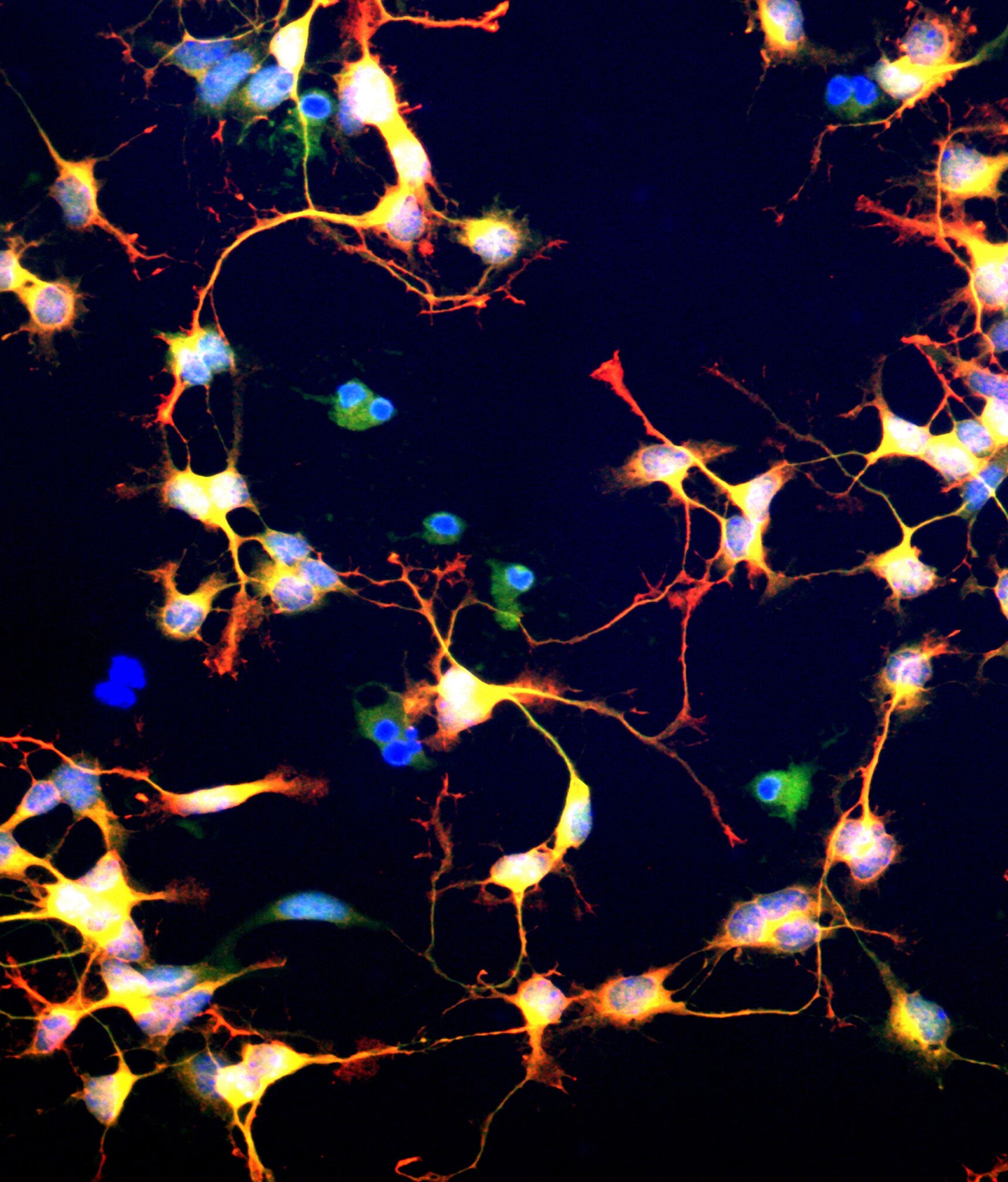
CHILDREN AS UNIQUE RESEARCHERS
Modern research in cognitive development, including the work of Alison Gopnik, a professor of psychology at the University of California, Berkeley, offers a new perspective on the nature of children's cognition. Instead of the outdated view that children as “underdeveloped adults,” they are seen as completely unique members of humanity with a special way of thinking that is evolutionarily attuned to exploration and learning.
Babies Are Born Experts, Not Blank Slates
In addition to a latent potential for genius, every infant is born with an innate foundation that makes it possible to view children as natural-born explorers of the world.
John Locke’s idea of the child’s mind as a tabula rasa—a blank slate shaped solely by external influences—has been overturned by modern research. Despite their immaturity, newborns' brains are already structured and contain a multitude of specialized neural networks shaped by evolution. These networks provide inborn intuitions about physical laws, numbers, probability, and even social interaction.
Innate Understanding of Physics
Research shows that infants are born with a basic understanding of physical laws. They expect objects not to pass through one another, not to disappear without cause, and not to exist in two places at once. When these rules are broken—such as when a toy “teleports” (vanishes in one spot and reappears in another without visible movement)—infants react with surprise. This phenomenon, known as the violation-of-expectation effect (Spelke, 1994), confirms that babies possess an internal model of the physical world. This evolutionarily embedded mechanism helps them perceive reality as an ordered system.
A Sense of Number
Infants recognize quantity without being taught. Studies show that babies as young as 2 to 3 days old react to changes in the number of objects—for instance, distinguishing between 4 and 12 dots. This indicates that the brain is already “pre-wired” for quantity assessment—a capability formed before birth. (Izard et al., 2009).
If a 4- to 5-month-old infant is shown a sequence like “1 object + 1 object = 3 objects,” they tend to stare at the outcome longer—demonstrating an intuitive expectation of the correct result (Karen Wynn, 1992).
These abilities are present before the child has any experience with counting or learning number words.
Experiments confirm that the innate ability to distinguish quantities is an evolutionarily ancient mechanism—not unique to humans but also found in other species such as monkeys, crows, chicks, and even fish.
Beyond physics and arithmetic, infants also possess basic intuitions about psychology and social interaction. From the earliest months of life, they demonstrate remarkable abilities to analyze the world around them—including an intuitive distinction between living and non-living objects and a foundational understanding of social dynamics.
Face Recognition
Studies show that even a fetus in the womb displays a preference for face-like images. In experiments, three dots arranged in the shape of a human face drew more attention from the fetus than the same three dots arranged in a pyramid shape. This suggests that the brain is innately tuned to detect socially significant stimuli (Reid, V. M. et al., 2017).

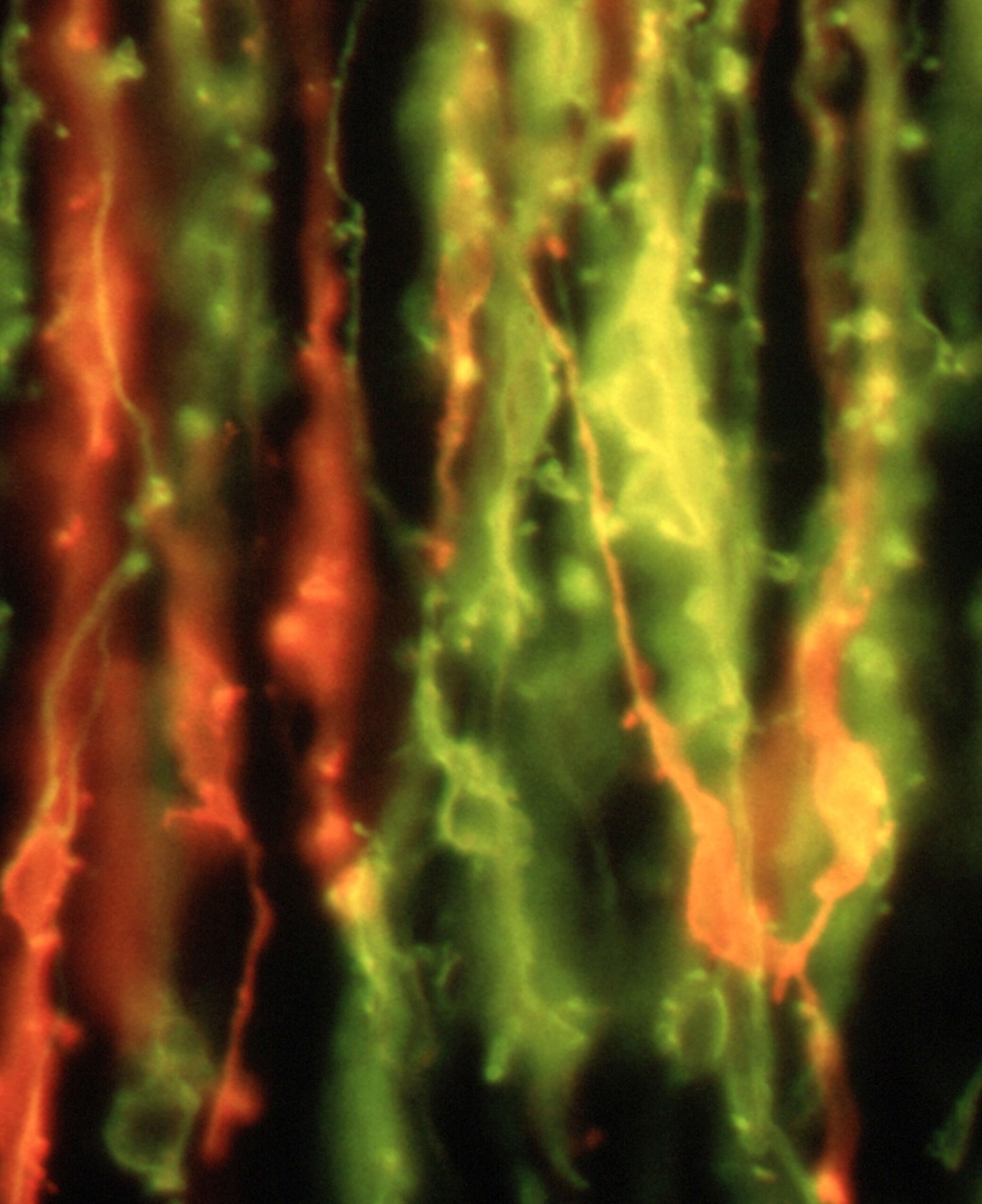
An Inborn Sense of Pedagogy
By the age of one, children can already recognize when someone is trying to teach them—distinguishing between an ordinary action and one intended as instruction. This skill plays a crucial role in the learning process (Csibra, G., & Gergely, G., 2009).
![Average between [ra] and [la]](/img/landings-new/genius/nature-of-genius/s7-icon.svg)
The Language Instinct—A Built-In Program of the Brain
The human brain is equipped with an innate language instinct. This universal mechanism allows children to acquire any language in the world. Infants are born with a unique ability to distinguish all the sounds of all human languages.
Unlike adults, who typically perceive only the sounds of their native language, infants under one year old retain a universal sensitivity to phonemes. For example, Japanese infants under six months old can distinguish between [r] and [l]—even though in their native language, these sounds are treated as one. By the end of the first year, however, this perceptual openness narrows under the influence of their linguistic environment, and they begin to specialize in the sounds of their native language (Kuhl, P. K., 2004).
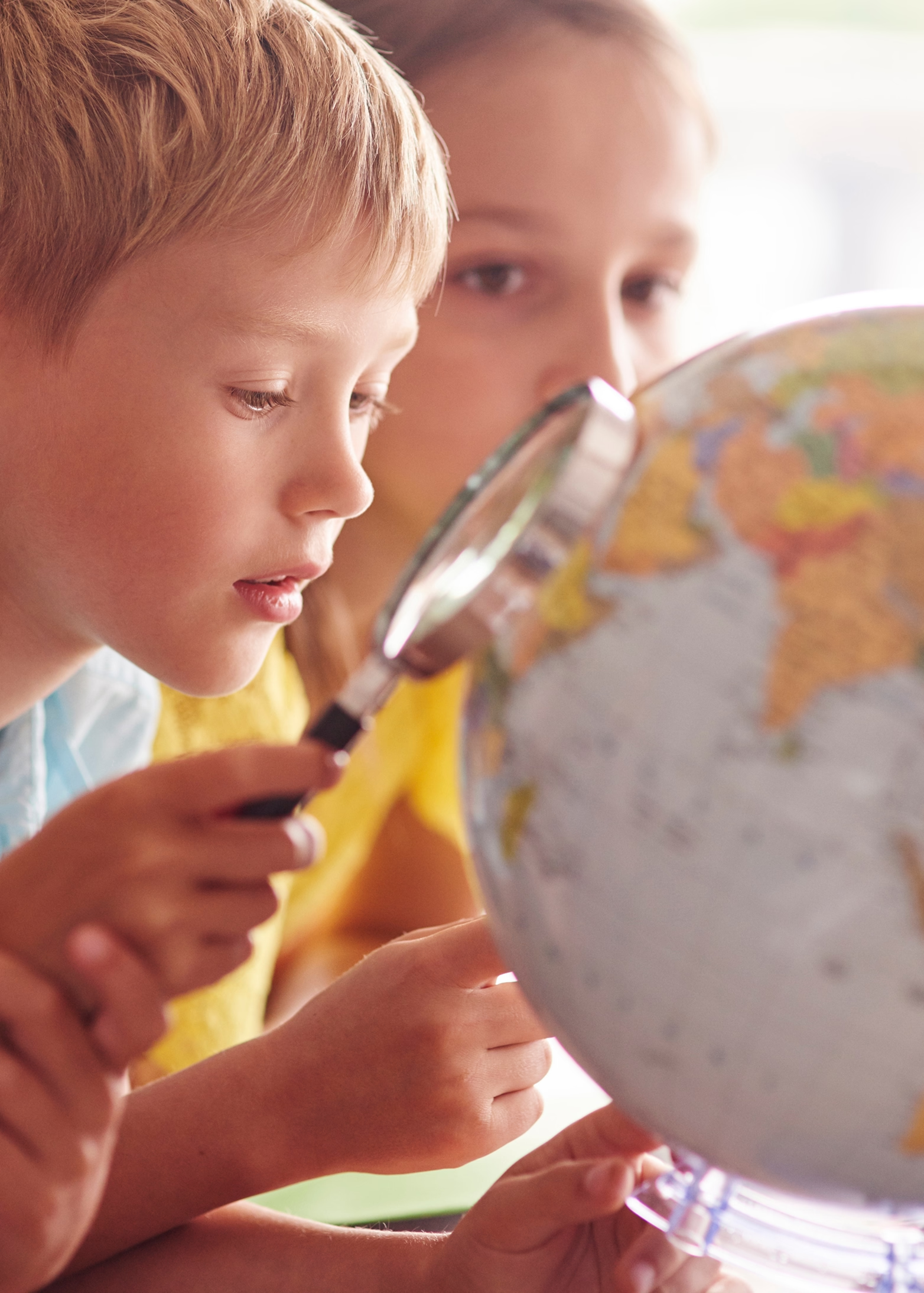
The newborn brain is an evolutionarily tuned instrument—optimized for rapid development.
In the first months of life, infants actively gather the statistical patterns of language: they analyze the speech around them, identifying regularities in sounds, syllables, and intonation. By listening to adult speech, they use their innate computational abilities to analyze and “crack” the linguistic code. Even when exposed to mistakes in adult speech, children learn language flawlessly—demonstrating their remarkable capacity for analysis and generalization.
A child doesn’t simply copy what they hear. They decode an extraordinarily complex system of rules, internalize them in the brain, and begin using those rules to communicate.
Within just a few months, infants exhibit astonishing capabilities: they distinguish phonemes, prosody, vocabulary, and even basic grammatical structures. By their first birthday, they’ve already laid the foundation for understanding the structure of their native language.
An Evolutionary Foundation
Modern research shows that the newborn brain is an evolutionarily tuned system—already embedded with core rules about the world. This foundation makes the child a natural explorer, equipped with all the essential tools for learning and adaptation.
How Infants Use Scientific Methods: Play, Observation, Experimentation
Infants engage in learning using mechanisms that are strikingly similar to the scientific method. They generate hypotheses about the world, test them through experiments—such as playing with objects—gather evidence, analyze outcomes, and revise their initial assumptions.
Early childhood learning happens not through deliberate instruction but through free exploration of the world—at a pace and with a level of creativity that exceeds that of trained scientists.
The Paradox of Childhood Learning
Despite the brain's immaturity, children master exceptionally complex skills—from language and social norms to the fundamentals of physics and mathematics—with a level of efficiency that adults simply cannot match.
The uniqueness of childhood cognition has a neurobiological basis:
- Redundancy of neural connections. A child’s brain initially contains far more neural connections than an adult’s. This surplus allows them to process vast amounts of information and explore a wide range of learning strategies. However, as they grow, unused connections are gradually eliminated through a process known as synaptic pruning. As a result, the brain becomes more specialized and efficient at performing tasks required for daily life. Over time, adults lose the ability to explore a broad range of new scenarios as their brains become optimized for solving specific, familiar problems.
The infant brain resembles a network of narrow, winding streets: neurons form millions of connections, enabling flexibility and the ability to solve problems in unconventional ways.
The adult brain is like a system of optimized highways: frequently used pathways are reinforced, while those used rarely disappear.
In early childhood, the brain is marked by high plasticity, cognitive flexibility, and a natural openness to experimentation. However, information processing in children is slower due to incomplete axonal myelination and the immaturity of the prefrontal cortex.
The adult brain, on the other hand, operates more quickly but sacrifices flexibility. It relies on a limited set of pre-established, automated patterns that accelerate the resolution of routine tasks and conserve time and energy. Yet this efficiency comes at a cost: a reduced ability to undergo radical change or adapt to unfamiliar circumstances.
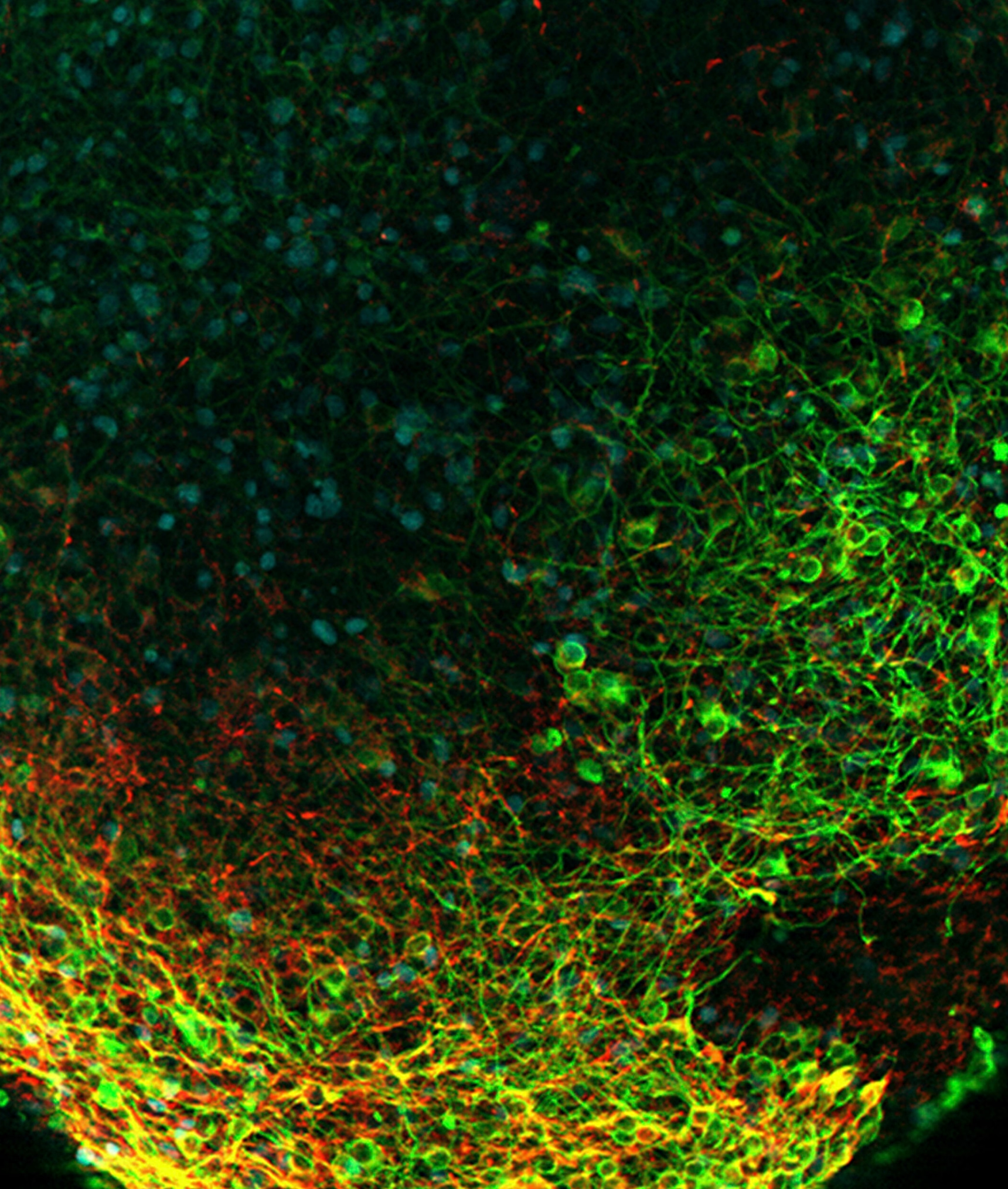
Differences Between Child and Adult Thinking:
- Children specialize in exploration and the generation of new ideas, while adults focus on the practical application of existing knowledge.
- A child’s brain isn’t locked onto a single task; it remains open and highly flexible, allowing infants to entertain multiple hypotheses at once—unconstrained by predefined categories or cognitive templates.
- An infant’s brain gathers information three times faster than an adult’s. For example, children can intuitively grasp grammatical rules simply by listening to speech. However, this rapid learning doesn’t happen through focused study—it occurs through free play and observation.
- Children explore all potential pathways for development. Adults, by contrast, rely on the most efficient solutions already discovered.
Children as a Distinct “Species” Within the Human Species
Children are active explorers of the world, equipped with innate abilities and learning mechanisms. Studying how they think reveals the very processes by which the human mind takes shape. Their brains—flexible, open, and still forming into the adult version—remind us that adults are, in essence, just a highly specialized version of what children once were.
In a sense, children can be viewed as a distinct “species” within our own—so unique and effective are their ways of learning and knowing.
Children are not simply miniature adults; they are a special kind of being, designed for discovery.
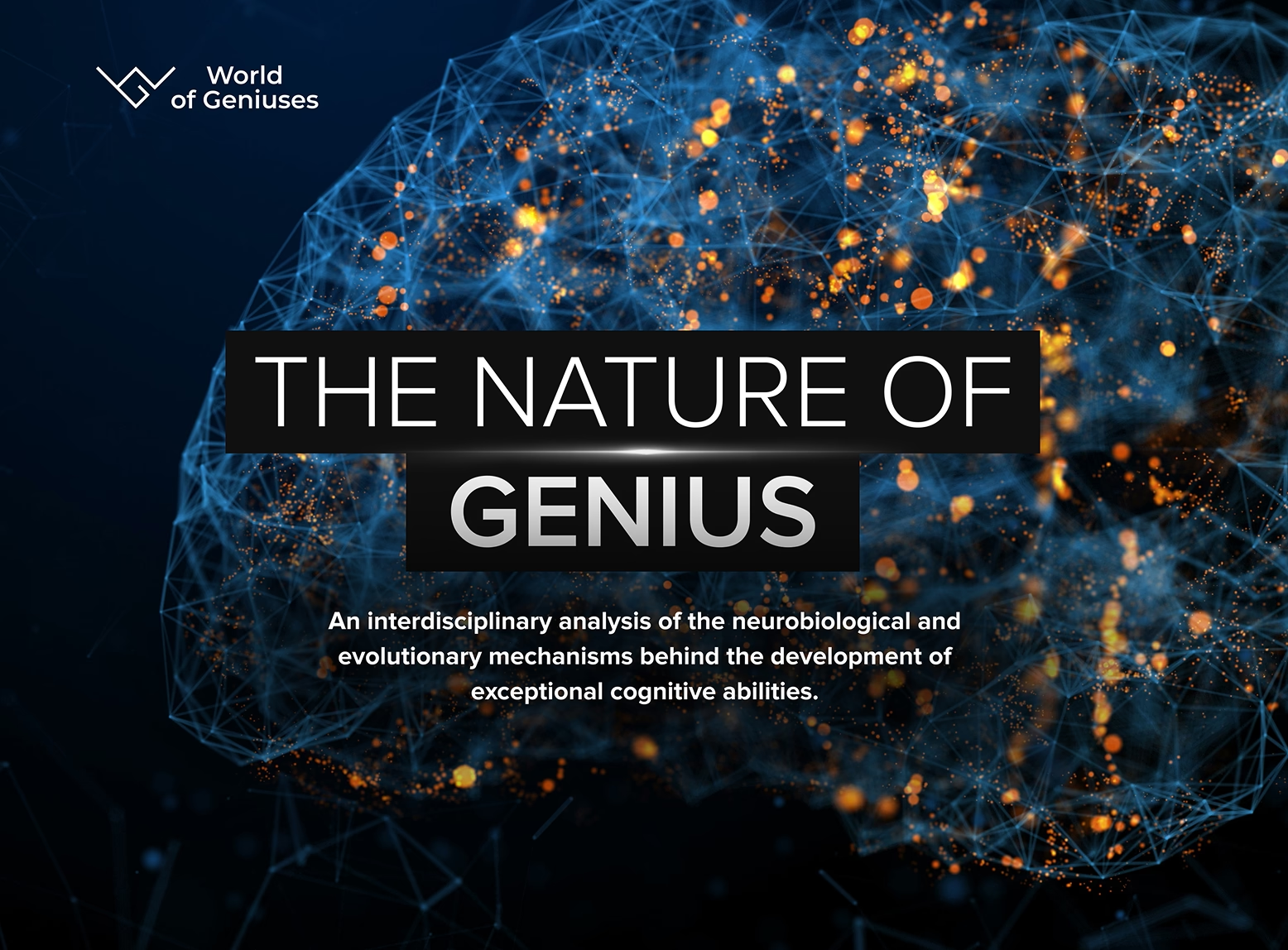
the Nature of Genius.
White Paper
An interdisciplinary analysis of the neurobiological and evolutionary mechanisms behind the development of exceptional cognitive abilities.

 Genius
Genius